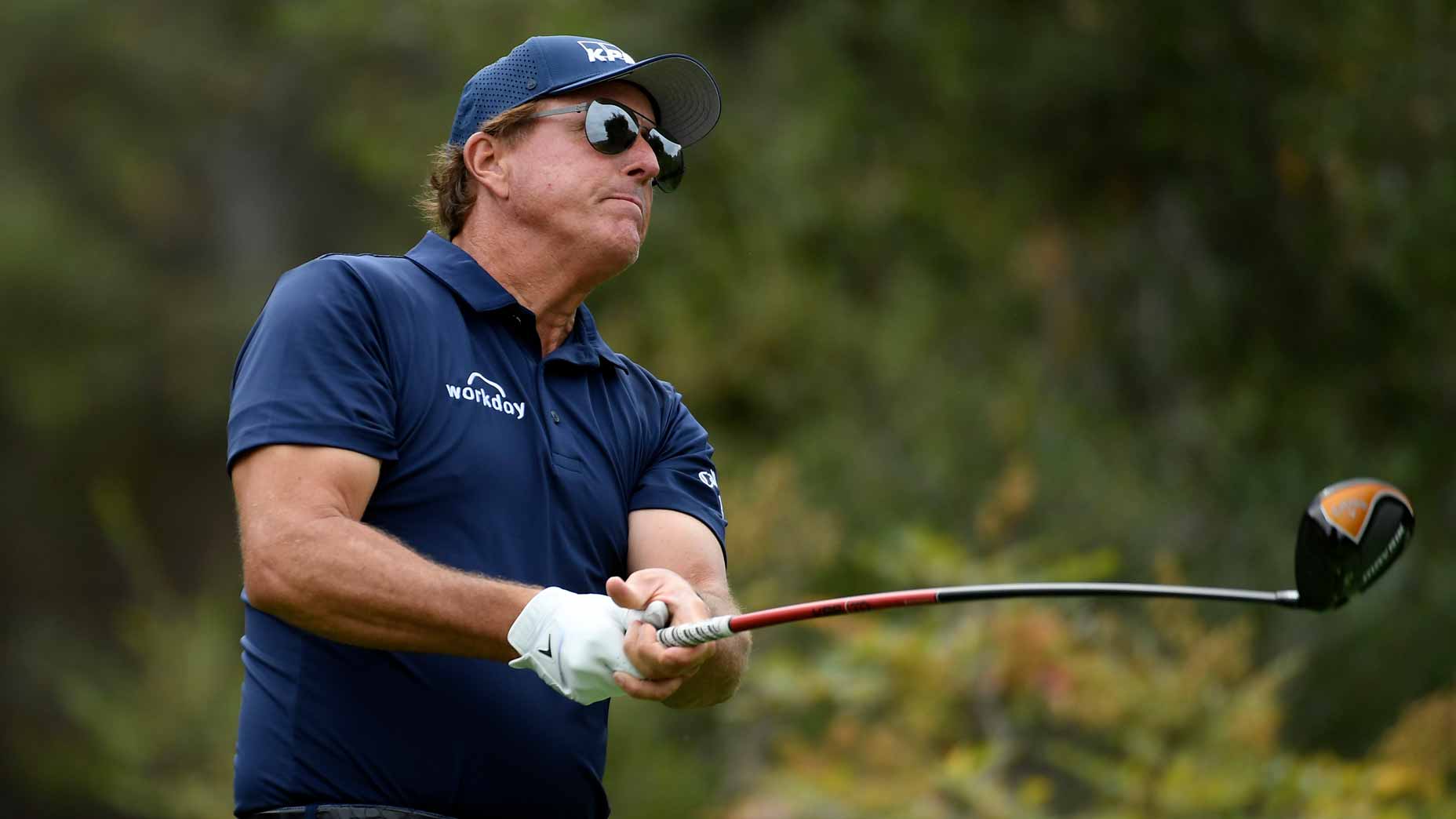Unless something changes between now and the first round of the 2020 Masters, Phil Mickelson plans to stroll into Augusta National toting a 47.5-inch Callaway Mavrik Sub Zero driver and 12.5-degree XHot 3Deep 2-wood.
It’s an unconventional setup. Then again, Mickelson has won majors with far more outlandish gear setups, including the year he toppled the field in Georiga with two drivers to claim his second green jacket.
In Mickelson’s eyes, adding a longer driver (and Callaway’s game-improvement Epic Forged irons) to the bag gives him an advantage on a number of holes at Augusta where flying the bunker can lead to a green-light scenario with a shorter club in hand. If the game plan sounds familiar, it’s because Bryson DeChambeau — along with a handful of other players — is currently weighing the pros and cons of embracing a similar blueprint at Augusta with a 48-inch driver in tow.
Callaway Mavrik Sub Zero
Unlike DeChambeau, Mickelson won’t be attempting to drive the 1st green or get it within wedge range on a head-spinning number of holes. But he still sees the value of hitting high, nasty bombs on five holes at Augusta with a 47.5-inch driver.
“[A]t Augusta, most of the drives carry the bunkers, and open up the fairways a little bit,” he said on the Callaway Golf Podcast. “So on number one, to carry the bunker on the right, to carry the bunker on two, to carry the bunker on eight, (and) to get it over the hill on 14 and 17. You really want to fly the ball 315-320 (yards) minimum and that seems like a lot, and it is a lot. It’s just that if you can fly it (that distance) there you have a chance to take advantage of some of those holes.
“For example, number one, if you can carry that bunker it’s a sand wedge in and you’re thinking birdie. If you have to hit a 3-wood off of the tee and go to the side, or if you can’t carry it and you have to play more to the left, it’s a 6- or 7-iron into the green, so you’re thinking par. So there’s – the ability to attack a number of holes if you can fly the ball a little bit farther.”
Mickelson also mentioned the iconic 11th — better known as the start of Amen Corner — as another possible driver hole, provided he’s able to keep it on the right side of the fairway and away from trouble.
“The fairway on 11 opens up too – the tough thing about 11 is that the whole dog leg is to the right, and the fairway angles to the left,” he said. “So the farther that you can carry the ball, you can hug the right side a little bit more and take the left trees out of play. So that big carry is a huge thing. I ended up putting a 47.5-inch driver in my bag and I ended up hitting it and I can fly it roughly that number that I’m looking for.”
Finding the perfect blend of distance and accuracy will be critical for Mickelson if he hopes to pull off the new driver setup. He tested the 47.5-inch driver for the first time at Sherwood in advance of the Masters, so it’s not a total unknown. What remains to be seen is whether he can improve upon his first go-around with the driver, which resulted in a rough showing in Strokes Gained: Off-the-tee (minus-8.000) and driving accuracy (59.62 percent). The lone silver lining was Mickelson recording the second-longest drive of the week at 355 yards.
At this point, the only thing that could alter Mickelson’s bomb and gouge plan is something he can’t control: the weather. Precipitation is in the forecast for Masters week, but with just six days to go until the start of the first round, there’s time for things to change.
“Historically when I’ve played the course in November, it’s a bit colder and it’s a bit wetter so you’re not getting as much run,” said Mickelson. “And it is a concern that if it rains, when your ball is landing into the grain the way that it is on every fairway, it’s going to dig into the ground much more than if it were landing down grain, where the ball would skid. And that allows mud to get on your ball, and that could be a big factor if there is any type of rain or dampness this week.”
Rain or shine, Mickelson appears to be ready to tackle Augusta with one of the longest drivers in the field.
